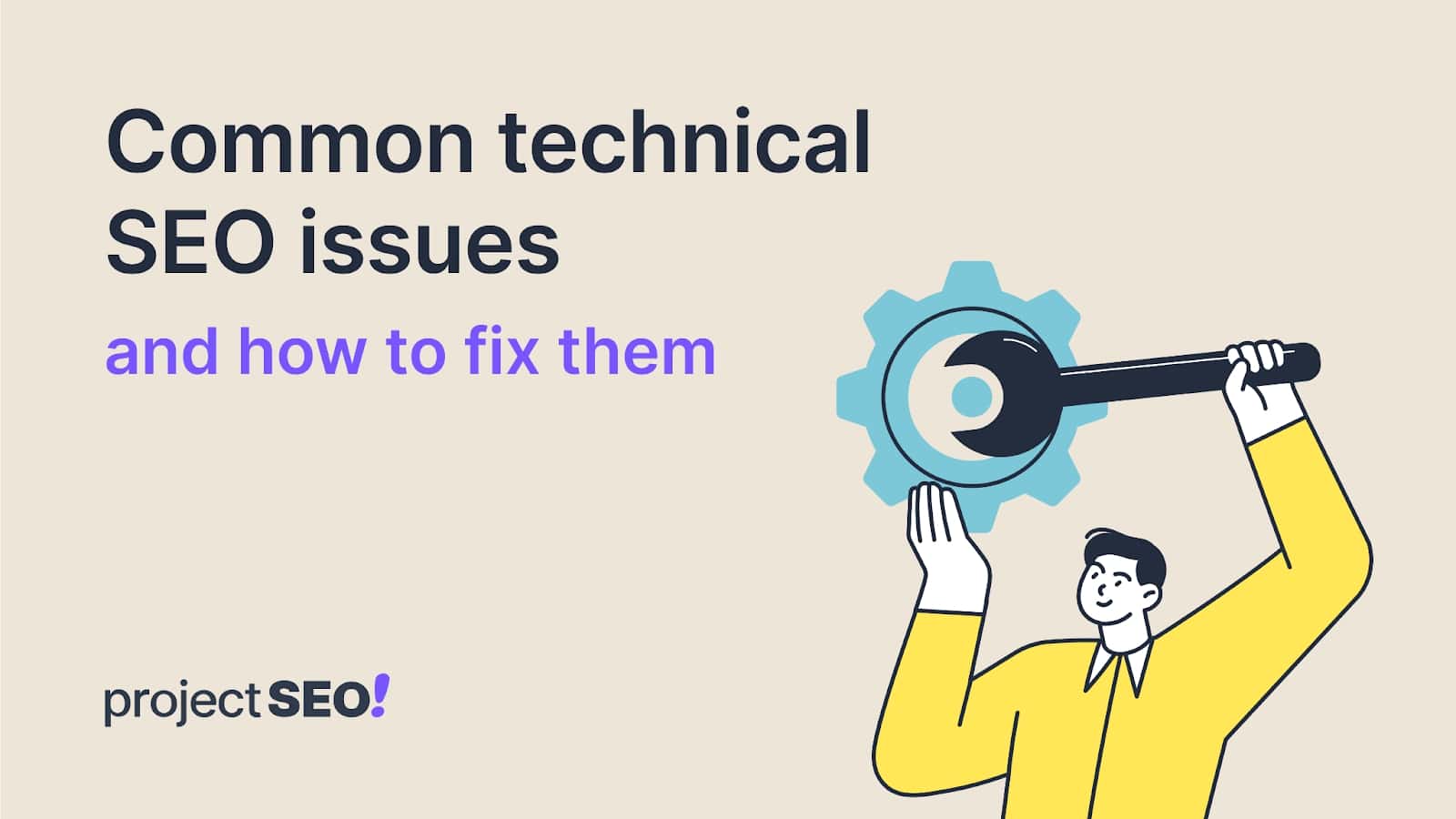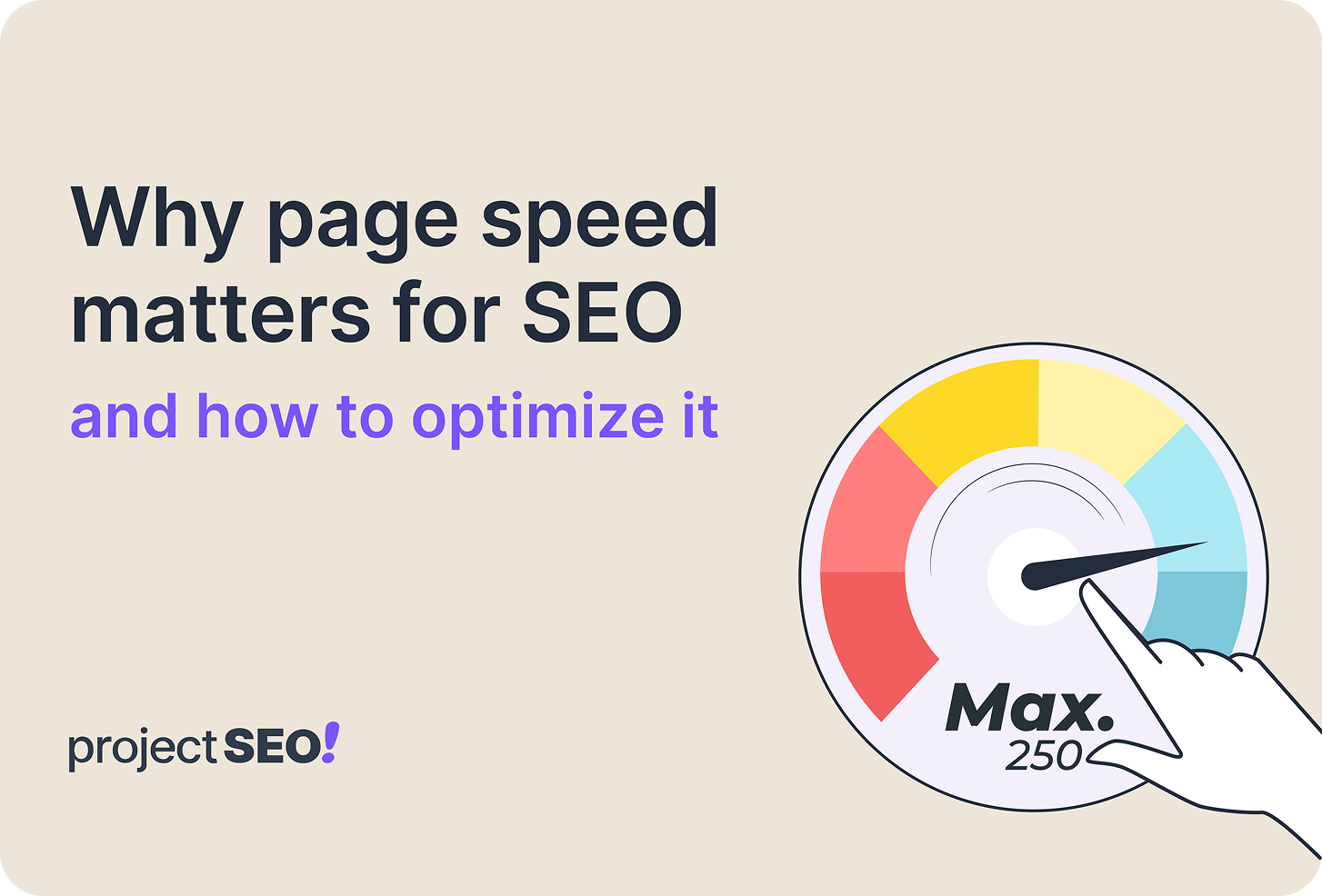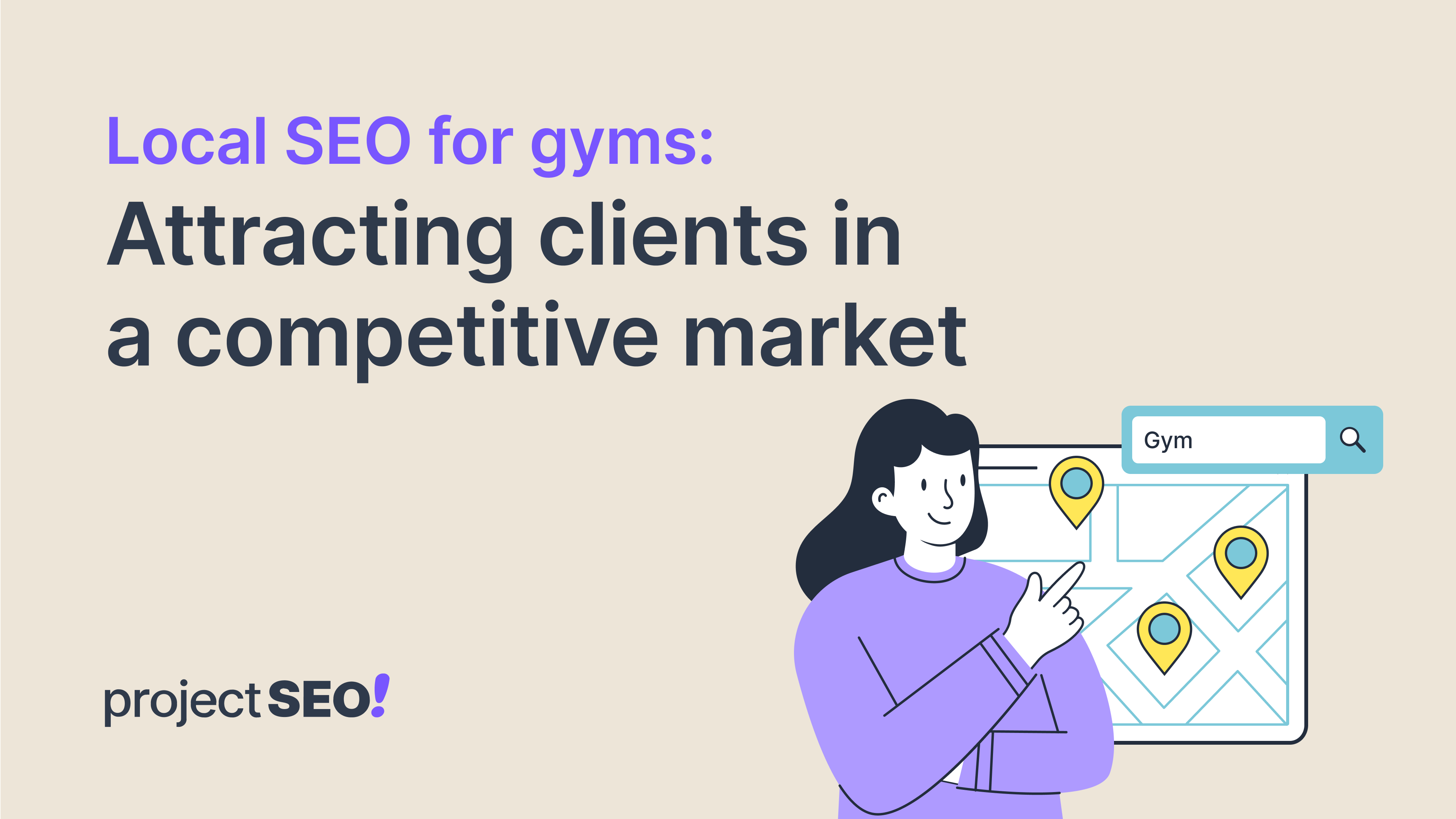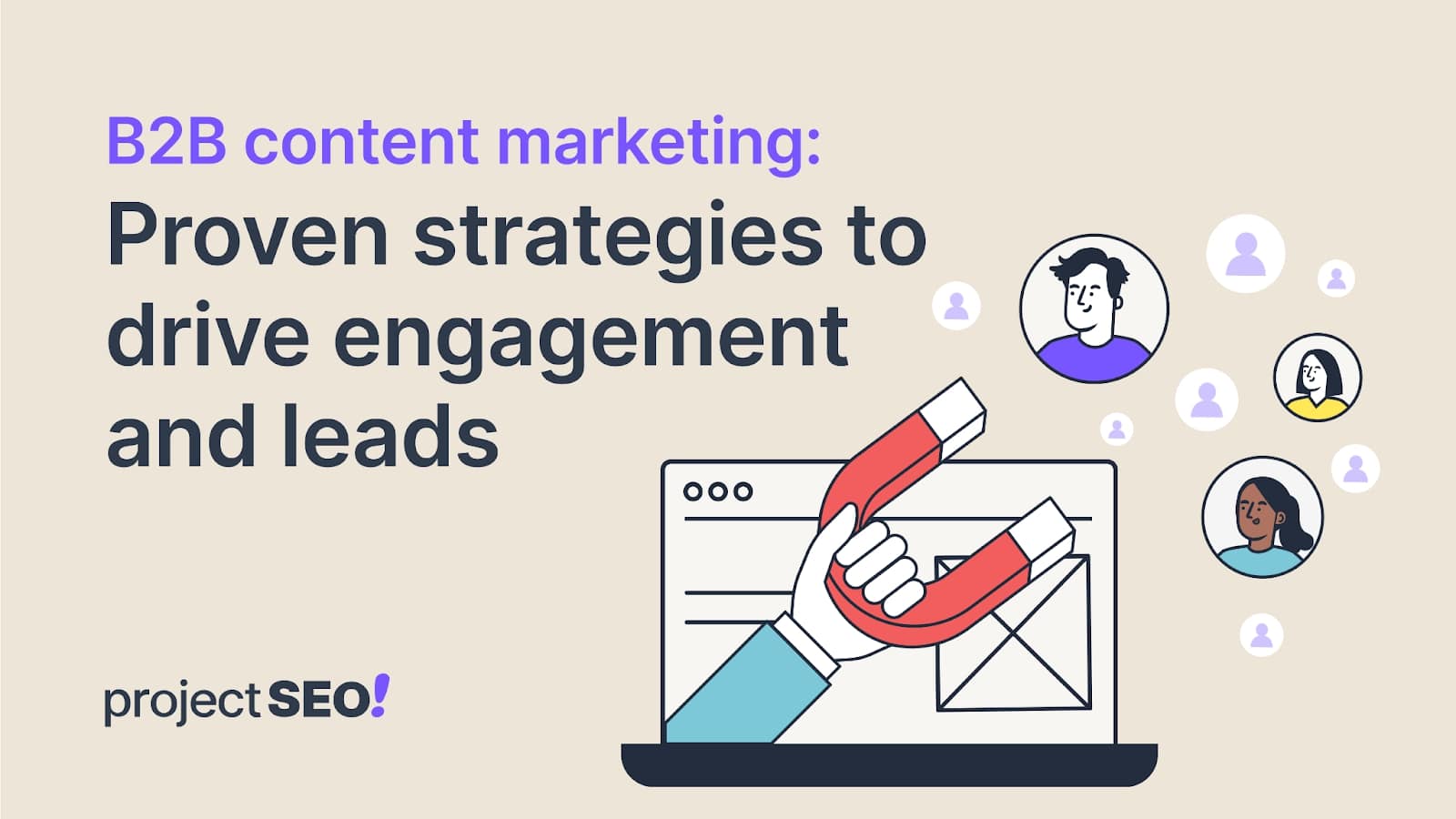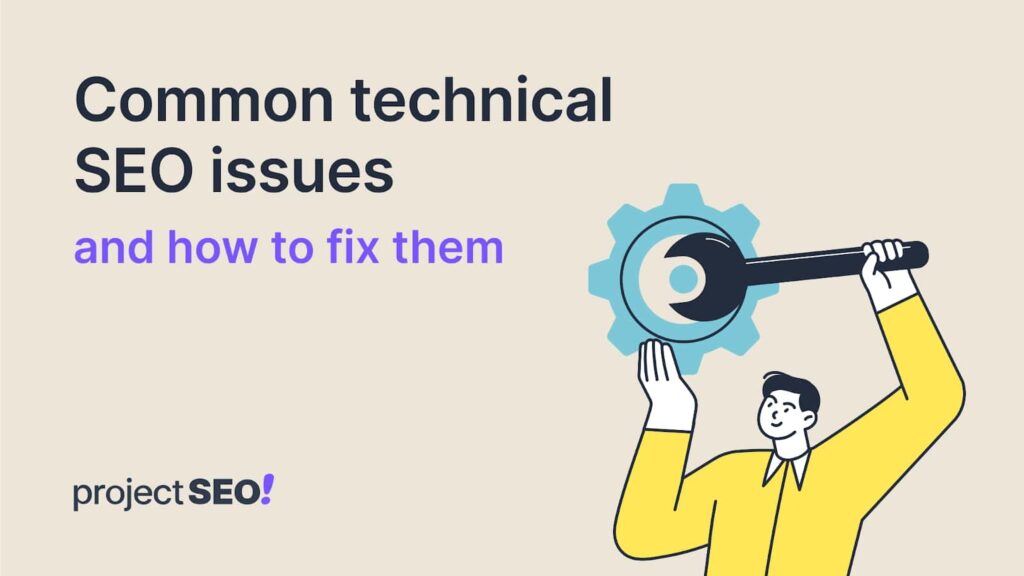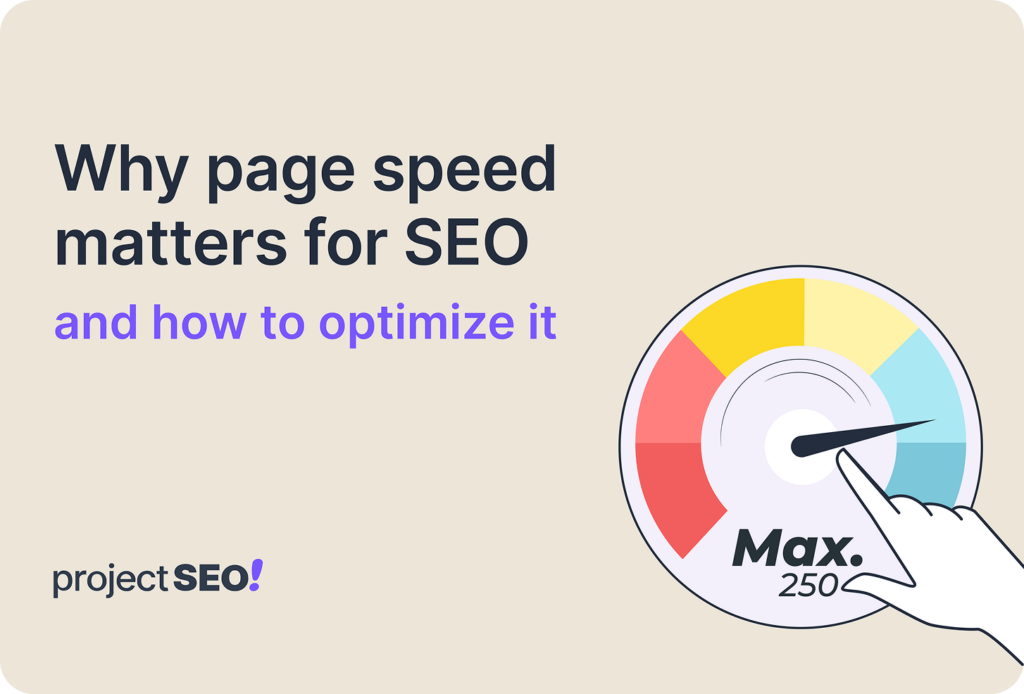To the average business owner, growing a business means attracting new customers, and content marketing remains one of the efficient, timeless, and cost-effective ways to do this. B2B content marketing is all about creating and sharing content that attracts other businesses, raises brand awareness, and drives sales. Instead of targeting individual consumers, B2B companies focus on building relationships with other businesses through helpful and informative content.
Content marketing is crucial for B2B companies because it helps them stand out in an ever-growing competitive market. Studies show that 93% of B2B marketers use content marketing, and companies with strong content strategies see almost six times more conversions. This shows how important it is for B2B companies to have a solid content marketing plan.
That said, let’s share proven strategies that can help your B2B content marketing yield results in 2024 and beyond. We’ve used these strategies for our projects and clients, which worked well in increasing brand visibility, attracting quality leads, and achieving substantial growth. The results have been clear, whether through our clearly defined goals, varieties of content catering to different funnel stages, blog posts connecting with industry leaders, webinars starting great conversations, or email campaigns turning prospects into loyal customers.
What is B2B Content Marketing?
B2B content marketing involves creating and distributing content to earn the attention of other businesses and convert them into loyal customers. This can include blog posts, podcasts, email newsletters, and infographics.
For example, a software company might create a blog post about the latest trends in their industry, a podcast featuring interviews with experts, or an infographic explaining how their product can solve common business problems. These types of content offer pathways for the company to connect with potential clients, build trust, and establish themselves as leaders in their field. They may distribute these pieces of content via the most suitable channels, such as their business website or social media platforms like Facebook, X, Instagram, or LinkedIn. But the question will always be, how do they create the right content, distribute it through the proper channels, and target the right audience? That’s where a content marketing strategy should play a major role.
A B2B content marketing strategy is a carefully thought-out plan showing how a business creates and shares content to engage and attract other businesses. Compared to B2C (business-to-consumer) marketing, B2B content marketing requires more careful planning. The decision-making process in B2B is more complex because it often involves multiple stakeholders, like managers, executives, and procurement teams. These longer sales cycles mean content must address various decision-makers’ needs at different stages of the buyer’s journey.
How is B2B Different From B2C Content Marketing?

B2B and B2C content marketing both aim to engage their target audiences and drive conversions. However, they still differ in the types of audiences they attract, sales cycles, content distribution channels, formats, and tone.
- Target Audience: B2B content targets other businesses and professionals. It is often detailed and offers solutions to specific business problems. B2C, on the other hand, targets individual consumers and aims to reach a broader audience. The content is more about appealing to emotions and immediate needs.
- Sales Cycle: The B2B sales process is longer and involves many decision-makers, such as CEOs, project managers, or human resource managers. Hence, its content must support each stage of the journey. The B2C sales cycle is shorter since an individual typically makes the decision. That’s why the content mainly encourages fast purchases.
- Distribution Channels: B2B content is typically shared on professional platforms like LinkedIn or through email newsletters. You don’t expect a SaaS company, for instance, to share an article detailing how their tool works on Instagram; they would most likely do that on LinkedIn. However, B2C content can be spread across social media platforms like Instagram and Facebook. This is because B2C content aims to connect with customers’ emotions while providing a quick solution to their needs. For instance, it makes more sense for a business that makes diabetes-friendly snacks to post its recipe video on Instagram instead of LinkedIn.
- Tone and Messaging: B2B content uses a more formal and professional tone since it targets professionals. It emphasizes ROI and efficiency. However, B2C content appears more casual and friendly, focusing on how the product improves the consumer’s life.
How Does Content Marketing Benefit B2B Companies?
Content marketing offers many benefits to B2B companies. It’s cost-effective and delivers a high return on investment (ROI). Studies have shown that content marketing generates about three times as many leads as traditional marketing and costs 62% less. This highlights the efficiency and effectiveness of high-quality content marketing strategies.
A great example of how our content marketing strategies made a difference was when we worked with Project ADA, a company dedicated to helping digital businesses stay compliant with the WCAG and avoid ADA violations. While Project ADA had a clear mission, it struggled to reach its target audience and demonstrate the importance of compliance.
We started by refining their content strategy to focus on the key challenges businesses face regarding web accessibility. We developed a series of blog posts and guides that explained complex WCAG guidelines in simple terms and highlighted non-compliance risks. One of our blog posts, “Do I get sued for not having an ADA-compliant website – Understanding Your Risk for Non-ADA Compliant Websites,” quickly gained traction, resulting in a significant increase in organic traffic to their website.
To further educate and engage their audience, we helped Project ADA launch a webinar series that covered various aspects of ADA compliance, featuring experts in digital accessibility. These webinars provided actionable advice and helped position Project ADA as a thought leader. The webinars attracted a wide audience, leading to a noticeable increase in sign-ups and engagement.
We also created an email campaign targeted at different segments of their audience, offering personalized compliance checklists and updates on legal requirements. This approach led to higher open and click-through rates, with many recipients expressing appreciation for the valuable content that helped them better understand and meet compliance standards.
Through these targeted content marketing efforts, Project ADA experienced a substantial increase in website traffic, built a loyal community of followers, and strengthened its reputation as an authority in digital accessibility and compliance.
Here are some specific benefits of B2B content marketing:
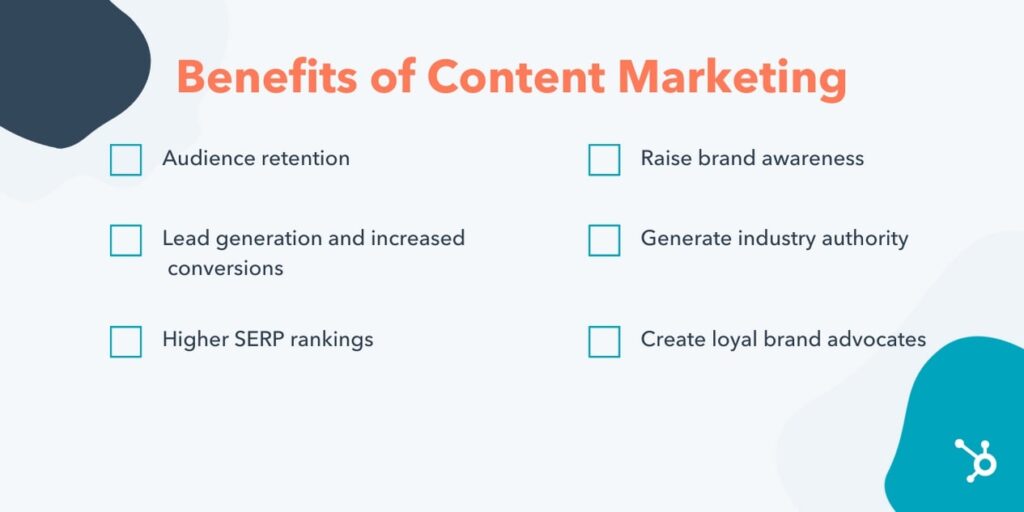
Improved Audience Engagement
When you create content that meets the needs and interests of your audience, they get encouraged to interact with your brand. When your audience is engaged, they are more likely to remember your brand when they need a solution.
Improved Brand Awareness
By consistently sharing high-quality content, you establish your brand as a leader in the industry. This increased brand recognition makes your business a top choice for potential clients.
More Web Traffic
Quality content optimized for search engines can attract more visitors to your website. Increased web traffic provides more opportunities to convert visitors into leads.
Improved Customer Trust and Loyalty
Providing valuable and informative content builds trust with your audience. When businesses trust you, they are likelier to remain loyal and continue working with you.
Enhanced Lead Generation and Conversion
Content marketing helps generate and nurture leads throughout the buyer’s journey. By catering to their needs at every stage, you guide prospects toward making informed decisions and becoming customers.
How to Develop an Effective B2B Content Marketing Strategy
1. Understand Your Audience
Start by learning about your target audience’s needs, challenges, and goals. According to Semrush’s 2023 report, audience research is the top factor marketers and business owners say drives success in content marketing. B2B marketers can only create content that appeals to their target audience if they understand the audience, know their pain points, determine their preferred channel of accessing information, and ascertain how they use search engines.
But how do you research and understand your audience in a B2B context? In other words, how do you know businesses that might be interested in your product?
For an existing website, Google Analytics can be your best bet for getting to know your visitors. Simply click on “Reports”> “User”> “User Attributes”> “Overview.” This will show you a breakdown of users by country, gender, age group, etc.
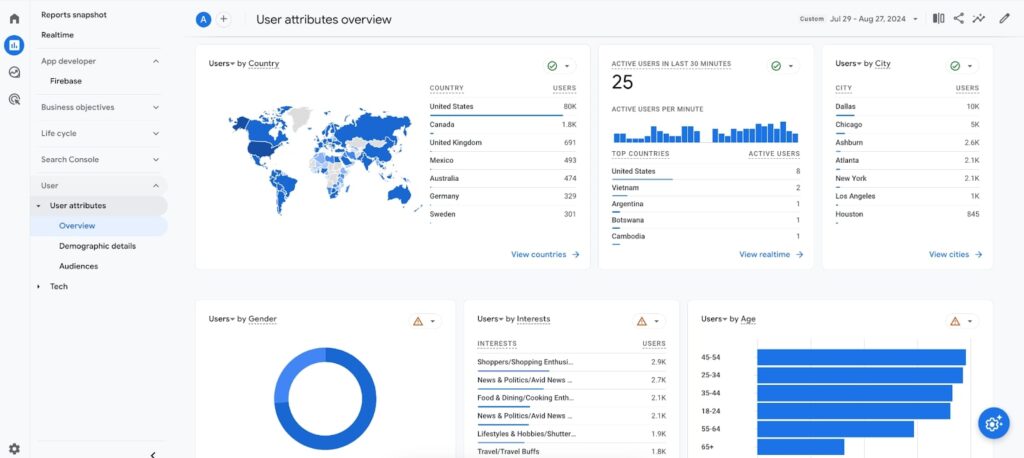
Other steps to identify and understand your target audience include
- Create Buyer Personas: Develop detailed profiles of your ideal customers. Think about their needs, challenges, and goals. This helps you clearly understand who you’re trying to reach.
- Segment Your Audience: Divide your potential customers into smaller groups based on their behavior, interests, or buying habits. For example, you might have one group that makes quick decisions and another that needs more time and information before buying.
- Choose Your Focus: Decide whether you’ll target all these groups or focus on one or two specific segments. Concentrating on a few key groups can help you create more effective and relevant content.
- Tailor Your Content: Once you know your audience, you can create content that speaks directly to their needs and interests. This ensures your content resonates with them and helps move them closer to becoming customers.
2. Understand Your Competitors
Understanding your competitors is just as important (if not more critical) as knowing your audience. Your competitors are always there before or after you set up your business. They will be there while you run the company and will “thankfully” be there long after you are out of business.
The question now is, why are they there? It is simple: They are there to make or mar your business. The extent to which you understand them is the difference-maker:
- What you know about your competitors is one of the major advantages you need to grow your business.
- What you don’t know about them is the likeliest pathway to go out of business.
Studies have shown that most B2B marketers would consider their competitors’ content when planning their own strategy. According to a Content Marketing Institute report, 83% of B2B marketers who want to differentiate their content from the competition say they need to produce better content; 72% think they must cover untapped topics to achieve that.
Understanding what your competitors are doing helps you identify gaps in the market, discover new content ideas, and differentiate your brand.
By analyzing your competitors, you can:
- See what topics resonate with your shared audience.
- Identify areas where you can offer more value or a unique perspective.
- Avoid repeating content that’s already been covered extensively.
In essence, competitor analysis helps you stay ahead in your industry, ensuring your content remains relevant, competitive, and appealing to your target audience.
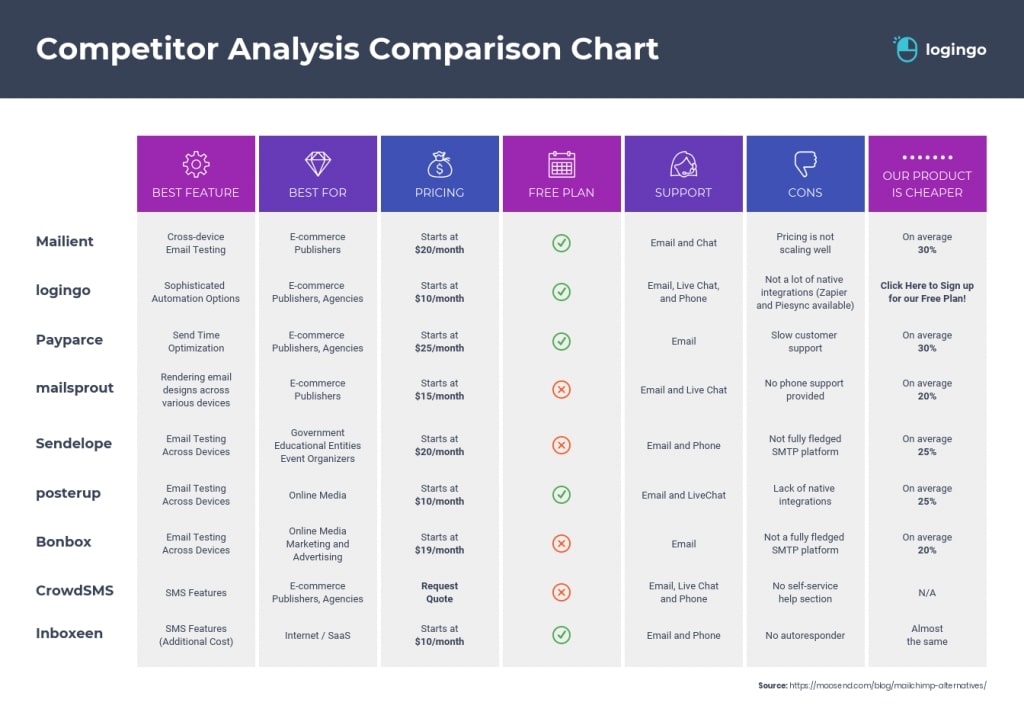
3. Map Out Clear Goals and Objectives
Once you have a grip on who your audience and competitors are, the next step is to define what you want to achieve with your content marketing.
Your goal could be to increase brand awareness, generate leads, or drive sales. Setting clear goals helps you measure the success of your strategy.
However, you must ensure that your goals are actionable with a clear roadmap. Start using SMART objectives (Specific, Measurable, Achievable, Realistic, Time-bound), which keep you on track with activities that will improve your strategy. Setting these objectives will also clarify the next steps.
Once you’ve set your SMART objectives, you’ll be able to answer questions like:
- What specific actions do we need to take to reach our goals?
- How will achieving these goals impact our overall business growth?
- Which key performance indicators (KPIs) should we monitor to gauge success?
- What content formats or topics will most effectively help us achieve our objectives?
It is also recommended that you divide whatever you aim to achieve into short—and long-term goals, depending on your unique needs.
Your short-term goals could be to,
- Increase website traffic by 20% in 3 months.
- Capture 50 new leads in a month with a downloadable ebook.
- Boost LinkedIn engagement by 15% in 2 months.
- Improve email open rates by 10% in 6 weeks.
Your long-term goals could be to,
- Become an industry leader within a year by publishing expert content.
- Grow an email list to 10,000 subscribers in a year.
- Increase content conversion rates by 25% in 18 months.
- Expand into a new market in 2 years with targeted content.
4. Run a Content Audit (For Existing Content)
As part of your content marketing strategy, you must evaluate your existing content to determine what’s working and what needs improvement. A content audit can help you spot this.
For example, you might find that some blog posts are generating a lot of traffic while others aren’t performing that well. While it might be tempting to ignore the poorly performing content and focus on creating new pieces of content, here is why we recommend improving existing content before creating something new:
- According to recent Google algorithm updates, too much low-quality content can hurt your site’s Google ranking.
- Poor-quality content can damage your brand.
- Existing content might have hidden potential.
- Improving existing content is generally faster and easier than crafting something new.
You can analyze your content using Google Analytics by going to “Reports”> “Life cycle”> “Engagement”> “Pages and screens” to view page performance. By default, the report will show data for the past 28 days.
Another way to dive deep into what’s working for your existing content and what’s not is by running a Web Quality Audit (WQA).
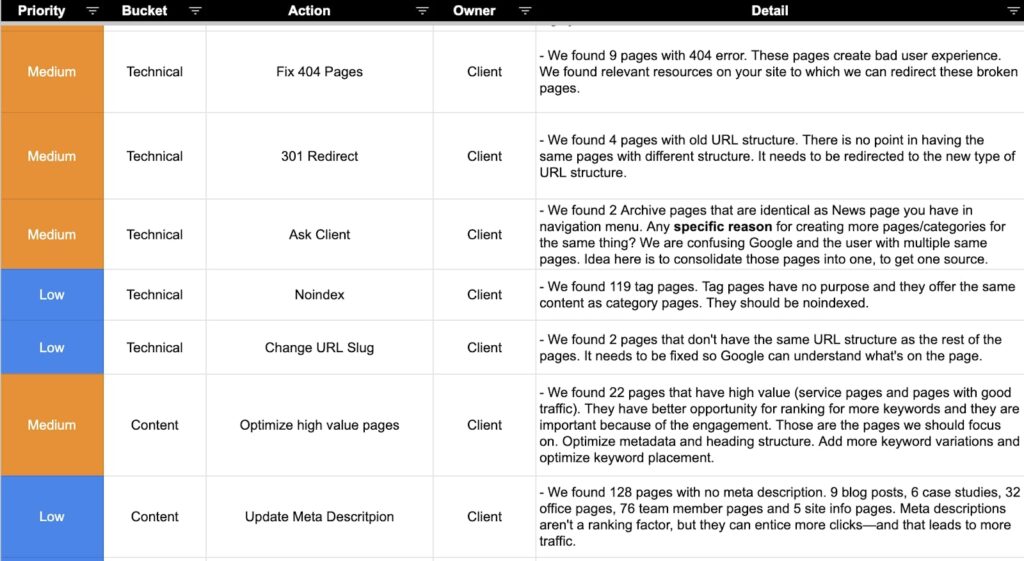
5. Create Content for All Stages of the Funnel
The B2B customer journey is often long and complex; recent surveys show it’s getting even longer, just like the stakeholders.
While this funnel can get as deep as awareness, interest, consideration, intent, evaluation, and purchasing stages, they can broadly be categorized into just three:
- The awareness stage (top of the funnel)
- The consideration stage (middle of the funnel)
- The decision stage (bottom of the funnel).

So, how can you keep your audience hooked and meet their needs at every stage? The key is to create content that addresses their specific concerns at each step.
Creating content for all marketing funnel stages is a strong strategy because it guides prospective customers from learning about your product to purchasing it.
Now, let’s say you offer a Human Resource (HR) management tool:
- At the top of the funnel or awareness stage, your audience just realized they have HR-related issues that you can solve. At this stage, they have probably never used any HR tool before and are far from making any purchasing decision, and your goal is not to make them buy immediately. You are simply looking to attract and nurture them as prospects. To capture them at this level, you could create blog posts that discuss common HR challenges, such as “How to Know Your HR Processes Need Improvements.”
- Middle of the Funnel (Consideration Stage): Your audience at this stage is looking for solutions to the problem they identified at the first stage. They may be interested in knowing what differentiates your product from others. Here, you should educate them on how your product or solution meets their need. To pull them further down the funnel, you could offer case studies that show how your HR tool has helped other companies. For instance, a case study titled “How Microsoft Streamlined Their Hiring Process with Our HR Tool” can demonstrate real-life success.
- Bottom of the Funnel (Decision Stage): This is where your audience is closest to making a decision. Having a clear and detailed product page on your website is crucial at this stage, as is offering detailed demos of your HR tool, free trials, and excellent customer service to build confidence in the customer’s choice. You could send an email with a limited-time discount offer for a fast response.
6. Create Varieties of Content
Too much of the same thing is always going to be boring. The same applies to having just one type of content. You must diversify your content for effective B2B content marketing. Content diversification will also go a long way in keeping your audience engaged.
Besides, the more content types you have, the more distribution channels you open up and, consequently, the broader your reach.
For instance, your video content could open up a distribution channel like YouTube, while your articles will serve your audience better on LinkedIn.
Other examples of content marketing formats you could employ in the B2B sector include,
- Case Studies: Showcase customer success stories to build trust and provide social proof.
- Research Reports: Share original research to position your brand as a thought leader and attract media attention.
- Blogs: Establish authority by writing on relevant topics. Use keyword research to find what your audience is searching for.
- Videos are highly engaging and effective for conveying information quickly. It allows the average person to consume a large amount of information in a short time.
- Podcasts: These offer deep discussions on topics that interest busy, on-the-go professionals, and they are available on platforms like Apple Podcasts and Spotify.
- Webinars are great for lead generation. Hosting a webinar allows you to collect attendees’ contact information and offer a virtual alternative to in-person events.
To make the most of your content, repurpose it. For example, if you’re considering hosting a webinar, start by writing a blog or LinkedIn post on the topic to gauge interest.
Tip: Start with simple formats to test and refine your ideas before investing in more complex content.
7. Reach Your Target Audience Through Effective Content Distribution
After exploring different content formats in your B2B marketing efforts, it is recommended that you use effective distribution channels to ensure the content reaches the right audience.
Here are some practical ways to distribute B2B content:
- Blogs: Blog posts will help drive organic traffic to your website. You can use a few SEO techniques to make your content easily discoverable by search engines. However, don’t over-impress the search engines since your target audience is not a robot but real people.
- Social Media: Platforms like LinkedIn are ideal for B2B marketing. You can share articles, videos, and quick updates to reach your audience there.
- Email Marketing: Send potential clients emails to maintain a connection. To improve engagement, you can either link to your content or include it directly in the email.
No matter the channels you choose, always track your results to see what works best so you can refine your strategy.
Before You Go
As competitive as your niche might have become, it is safe to say that B2B content marketing is the key to unlocking your growth. A well-thought-out strategy can enhance your brand, improve traffic, engage your audience, and help you achieve your business goals.Ready to take action? Contact us today for a free consultation or demo and learn how we can help you succeed in 2024.
